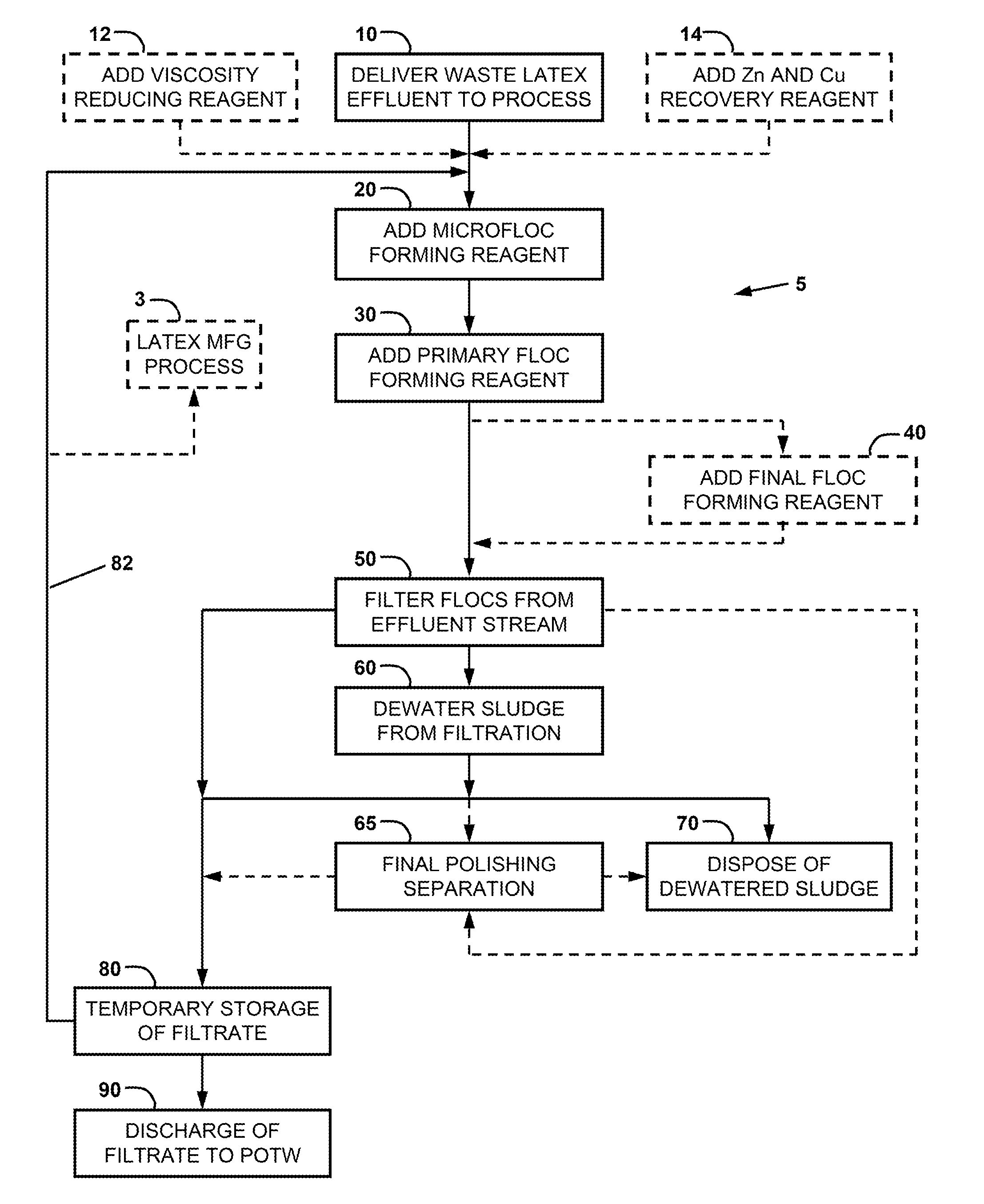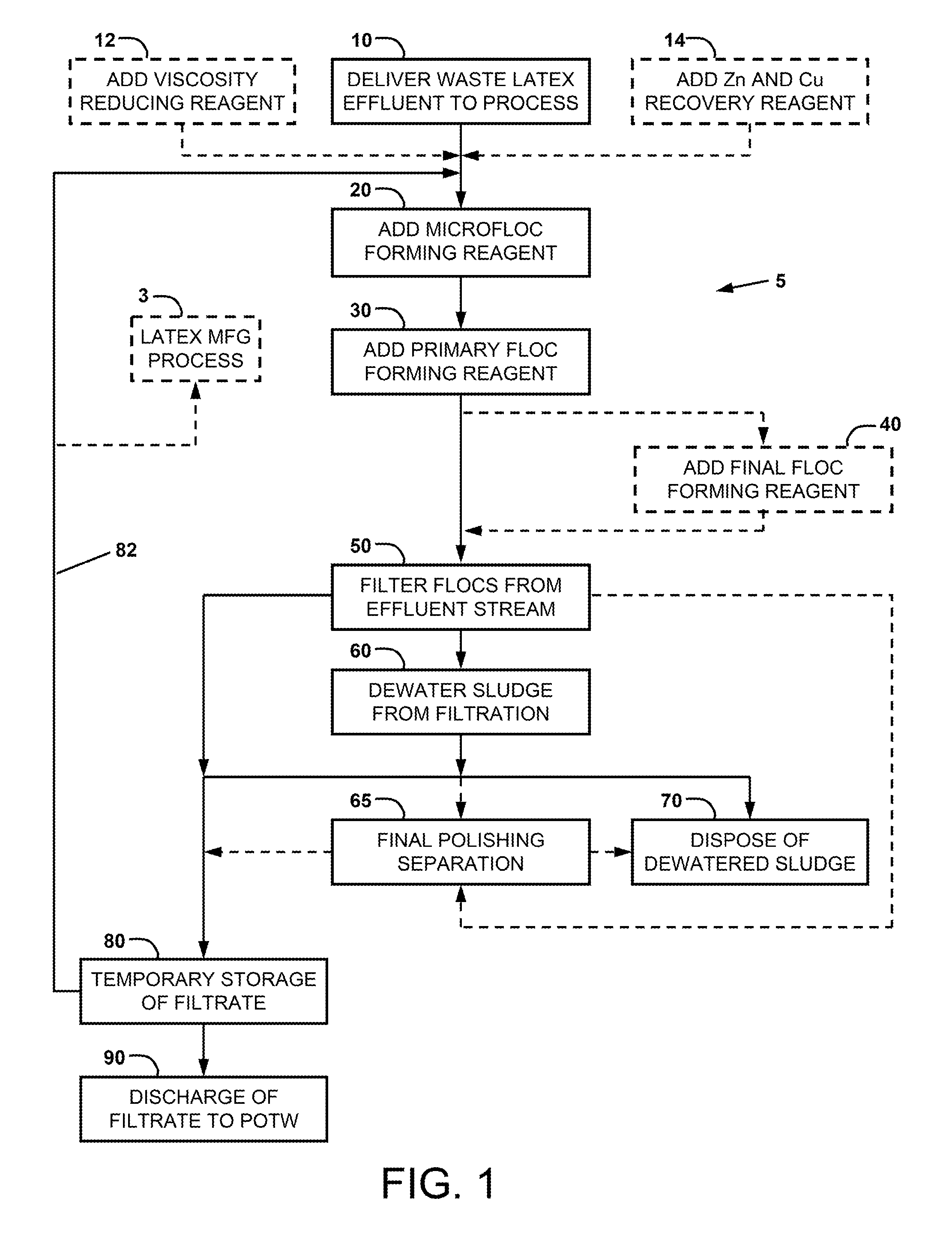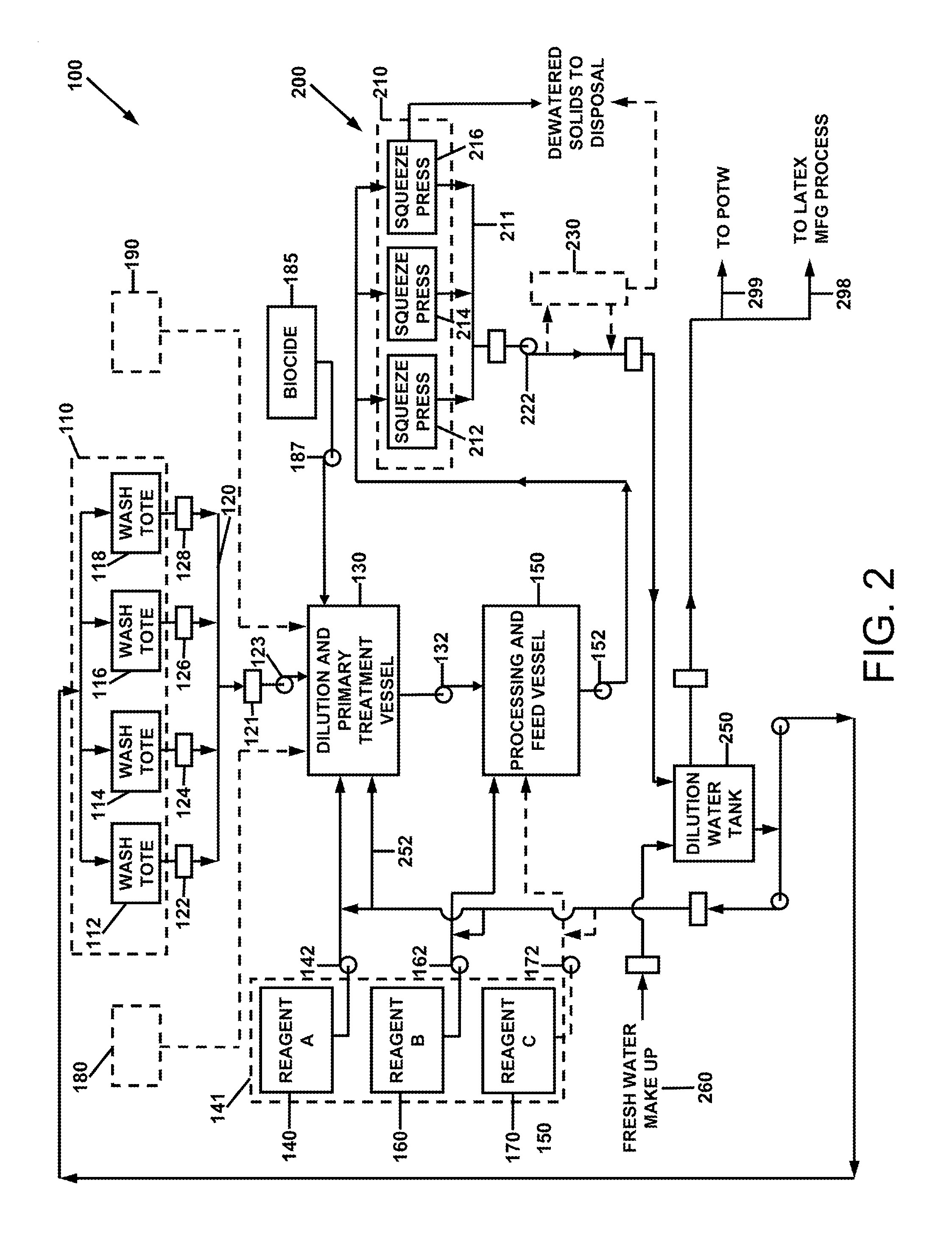Method for treatment of waste latex
a technology of waste latex and treatment method, which is applied in the direction of separation process, filtration separation, treatment involving filtration, etc., can solve the problems of inability to economically solve the manufacture of latex paint and other latex emulsions, the energy cost of evaporation water from waste is too high, and the concentration of latex by evaporation is not economically feasible, so as to reduce the blinding of filtration fabrics and reduce the blinding of filtration media. ,
- Summary
- Abstract
- Description
- Claims
- Application Information
AI Technical Summary
Benefits of technology
Problems solved by technology
Method used
Image
Examples
Embodiment Construction
[0045]For a general understanding of the present invention, reference is made to the drawings. In the drawings, like reference numerals have been used throughout to designate identical elements. In describing the present invention, a variety of terms are used in the description. Standard terminology is widely used in latex paint, coating, and adhesive and emulsion art.
[0046]As used herein, the term “latex” is meant to indicate synthetic latices including but not limited to styrene-butadiene copolymers (SBR), acrylonitrile-butadiene copolymers, polychloroprene, acrylic polymers, vinyl acetate polymers, vinyl acetate-ethylene polymers, vinyl chloride polymers and copolymers, polybutadiene and polyisoprene; as well as natural rubber latex.
[0047]As used herein, the term “waste latex” or “latex waste” is meant to indicate any latex waste stream produced by the normal or abnormal operation of a latex paint manufacturing plant, a latex adhesive manufacturing plant, a latex coating manufact...
PUM
| Property | Measurement | Unit |
|---|---|---|
| weight percent | aaaaa | aaaaa |
| weight percent | aaaaa | aaaaa |
| weight percent | aaaaa | aaaaa |
Abstract
Description
Claims
Application Information
 Login to View More
Login to View More - R&D
- Intellectual Property
- Life Sciences
- Materials
- Tech Scout
- Unparalleled Data Quality
- Higher Quality Content
- 60% Fewer Hallucinations
Browse by: Latest US Patents, China's latest patents, Technical Efficacy Thesaurus, Application Domain, Technology Topic, Popular Technical Reports.
© 2025 PatSnap. All rights reserved.Legal|Privacy policy|Modern Slavery Act Transparency Statement|Sitemap|About US| Contact US: help@patsnap.com



